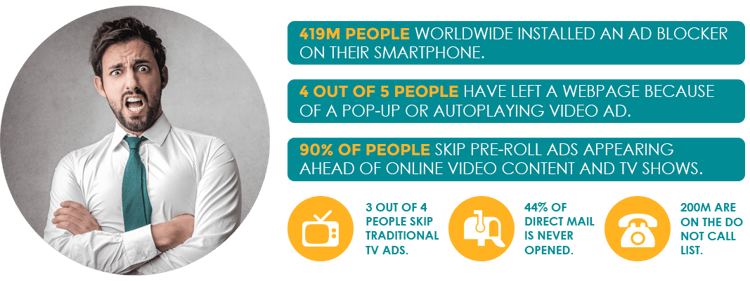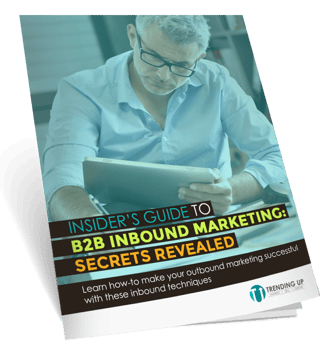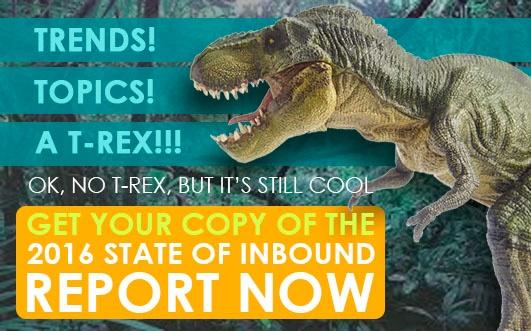Whether you’re ready or not, manufacturer marketing has already been disrupted. Peoples' behaviors have changed, and they’re tuning out traditional marketing tactics.

The old marketing playbook for manufacturing companies is broken.
- 419 million people worldwide have installed an ad blocker on their smartphone.
- 4 out of 5 of people have left a web page because of a pop-up or autoplaying video ad.
- 90% percent of people skip pre-roll ads appearing ahead of online video content and TV shows.
- 3 out of 4 people skip traditional TV ads.
- 44% of direct mail is never opened.
- 200M are on the Do Not Call list.
The tactics that used to work well for your salespeople are no longer effective in reaching your audience and marketing and selling your manufacturing product. This is especially true for B2B buyers, who do 67% of their research prior to talking to anyone from your company.
In order to attract customers, marketers have to provide them with something they’ll love.
What’s Inbound Marketing for Manufacturers?
Inbound marketing is a holistic, data-driven approach to marketing that attracts individuals to your manufacturing brand and converts them into lasting customers.
Prospective manufacturing buyers are researching and finding out information well before speaking to anyone directly at your company. Who is providing that information? If it’s not you, and if it’s not already a huge part of your manufacturing company marketing strategy to be part of that information-giving process, it should be. That’s what inbound for manufacturers is all about. It’s using data to provide the right information, at the right time, to prospects looking to do the following:
- Name their problem
- Build requirement lists
- Learn technical jargon and specs
- Form opinions
- Narrow their options
So, let’s walk through the methodology.
The Inbound Methodology & Tactics
The inbound marketing methodology is all about the content, and the context, of your marketing. By publishing the right content in the right place at the right time, your marketing becomes relevant and helpful to your customers, not interruptive. In the attract phase, customers are looking for a solution to their problem. You’re providing answers through great, relevant content.
This customer-centric approach is the basis of inbound. Manufacturing blogs, search engine-optimized pages and keywords, photos, infographics, and videos all attract strangers who are looking for solutions to a problem. In the convert phase, you’re offering the visitor a free piece of valuable information in exchange for their contact information through a landing page, form, and follow-up thank-you page and email. No pressure, just offering the value. The visitor has now become a lead.
 Ebooks, white papers, guides, checklists, and other high-value pieces take part in the conversion process, along with a website designed to convert using landing pages, calls-to-action, and forms.
Ebooks, white papers, guides, checklists, and other high-value pieces take part in the conversion process, along with a website designed to convert using landing pages, calls-to-action, and forms.
In the close stage, the lead has potential to become a customer - if they’re the right fit. Using data and analytics to determine the lead’s path online, using personalization on your website and nurturing the lead through emails and workflows, you’ll be aware of when the lead is ready to make a purchase.
Using permissions-given email to continue to nurture manufacturer leads that aren’t quite ready to purchase is another key. No lead should speak to a salesperson until they’re ready, but nurtures are a great way to keep in contact until then.
Once the purchase takes place, it’s time to continue to the final phase: delight. Customers continue to be delighted by your business’s customer service, social media presence, events, and smart content on your site when they return. They become promoters of your business thanks to the customer-centric approach you’ve taken with them.Using inbound marketing this way can turn strangers into leads, customers, and promoters of your business. Now that’s marketing people can love.
What Makes Inbound So Effective
Inbound marketing for manufacturers is effective for two huge reasons.
-
It’s multi-channel.
Inbound marketing is multi-channel by nature because it approaches people where they are, in the channel where they want to interact with you. Instead of forcing your message into an arena where someone isn’t ready to purchase, it meets people where they are, when they’re looking, increasing relevance. -
It’s effective.
Inbound marketing helps build a lead pipeline for your sales team, which is the ultimate goal of marketing. The ROI is almost 4 times the amount of traditional marketing tactics.
Using the B2B inbound marketing methodology, manufacturing companies can transform their marketing and sales tactics from outbound, ineffective, and less productive to inbound, efficient, and up to 60% more productive than outbound.
The Follow-up: Inbound Sales for Manufacturers
Inbound sales is the extension of the inbound marketing methodology into the sales process, creating a cohesive experience for a potential customer and making the sales process informative and consultative.
A huge part of effective manufacturing sales process starts with lead nurturing. To do that well, many of our clients utilize the steps of inbound marketing and extend them to the sales process. We call this sales enablement. Read more about sales enablement for manufacturers here in this blog post.





